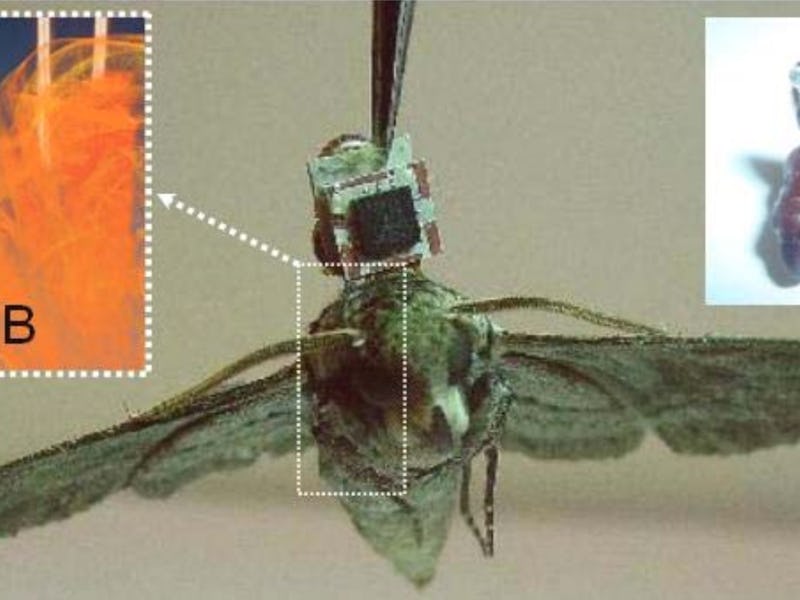
The next time you see a moth, dragonfly, or other winged insect, go in for a closer look. The Defense Advanced Research Projects Agency (DARPA) has been developing insect cyborgs for the past seven-plus decades, and a recent Freedom of Information Act (FOIA) request from San Jose State University Lecturer Dr. Susan Maret’s blog “secrecy {fragments}” shows just how sophisticated these futuristic, dystopian bug drones have become.
Over a year after Maret’s FOIA request, DARPA sent back 88 pages, most of which were Powerpoint slides. Since the 1940s, DARPA’s toiled to develop Micro Air Vehicles (MAVs) and Micro-Electro-Mechanical Systems (MEMS). It didn’t take long for engineers to realize that the key to effective MAVs was right in front of their eyes: Nature’s own insects — and, in some cases, winged mammals — were ideal case studies to be mimicked and, in some designs, enslaved. These engineers, along with DARPA’s numerous contractors and subsidized academic institutions, began developing HI-MEMS — Hybrid Insect Micro-Electro-Mechanical Systems.
Yikes.
MAVs and HI-MEMS offer several advantages in military operations, which explains why DARPA’s been pursuing their realization for so long. DARPA’s declassified documents list these advantages. MAVs are hard to detect, affordable, replaceable, and easy to operate. A MAV is a “Fully Functional Vehicle Capable of Performing a Useful Military Mission at an Affordable Cost,” as stated in the documents. MAVs offer unprecedented reconnaissance and surveillance possibilities, biochemical sensing and tracking capacities, and can serve as beacons for rescue operations. They’re the enemy’s worst nightmare: A wolf in sheep’s clothing, a camera in a bug’s body. This is all well and good when the enemy is the actual enemy — but when the U.S. government routinely over-surveils its own citizens, this is not so well and good.
The FOIA documents start with a slideshow from 2006, entitled “Micro Air Vehicles — Special Challenges.” The presentation’s second slide calls MAVs “A Prophecy Yet to be Fulfilled!” The final document in the release, however, is a paper from 2008: Cornell University faculty published “MEMS Based Bioelectronic Neuromuscular Interfaces for Insect Cyborg Flight Control,” which, it seems, brought the prophecy closer to fruition. No longer was mere imitation necessary; now, engineers could modify actual insects, then control them remotely. The researchers were able to insert microprobes inside pupae. When the insects metamorphosed, the microprobes had become interwoven with their bodies. The researchers could then activate the microprobes to control the insects’ wings and flight paths.
Detailing when to insert the implants.
In the paper’s conclusion, the authors write: “We also showed down-and up-stroke actuation of each wing separately, through which we were able to affect the flight direction of Manduca sexta. This work paves the way for future engineering approaches to utilize the bioelectronic interfaces, especially for realizing insect cyborgs.” In the acknowledgements, the researchers thank DARPA’s HI-MEMS program for single-handedly footing the bill.
Eight years have passed since these researchers’ insect cyborgs first took flight. It could well be that these cyborg bugs already fly among us, or patrol far-off battlefields. Or maybe they remain an unfulfilled prophecy. Regardless, like the cicadas, they’re bound to rise soon enough.